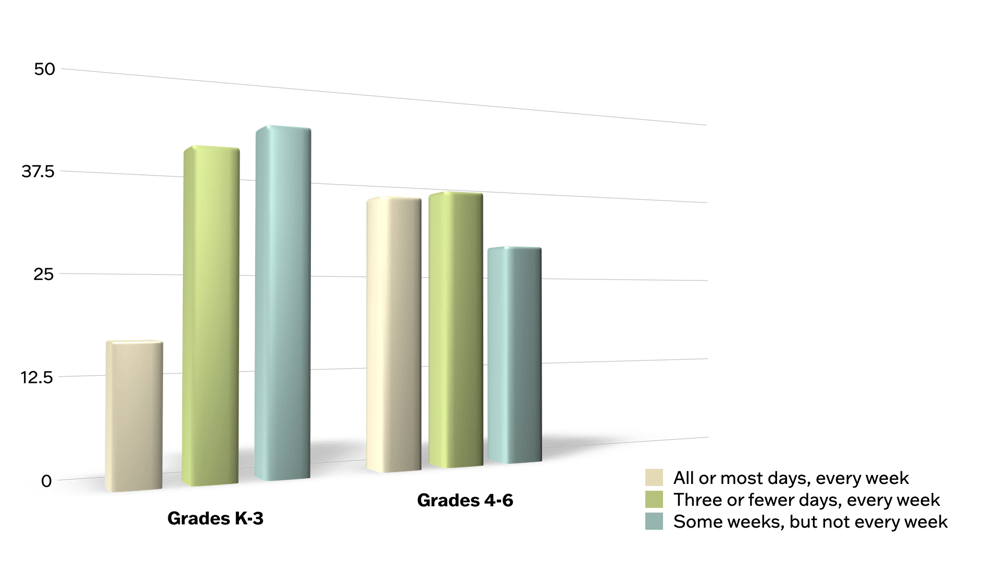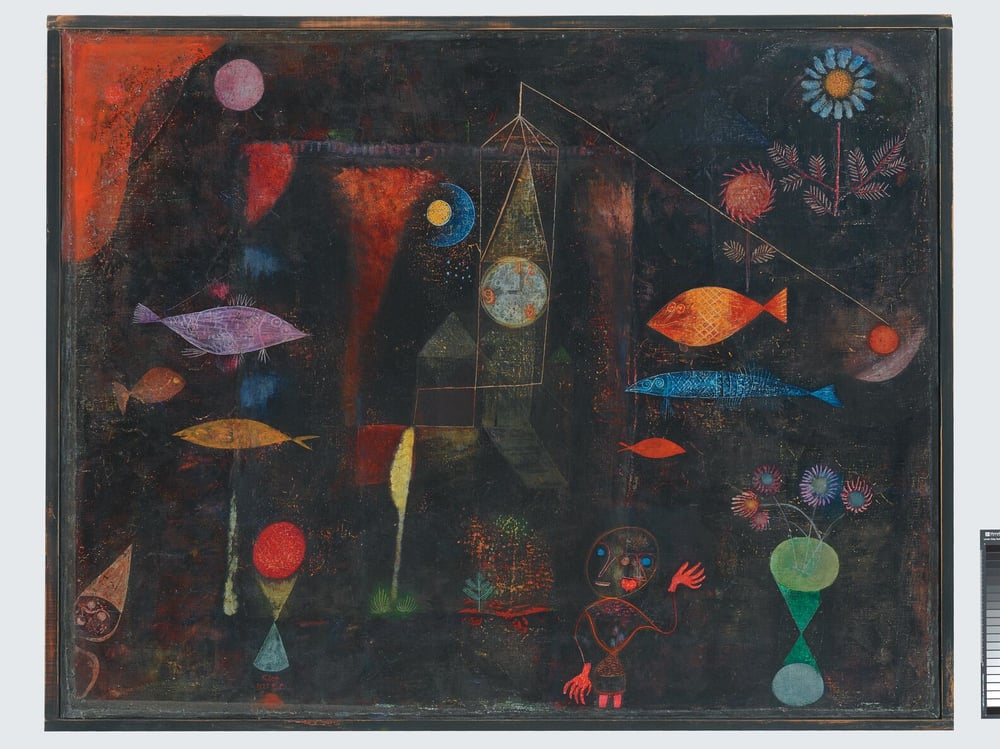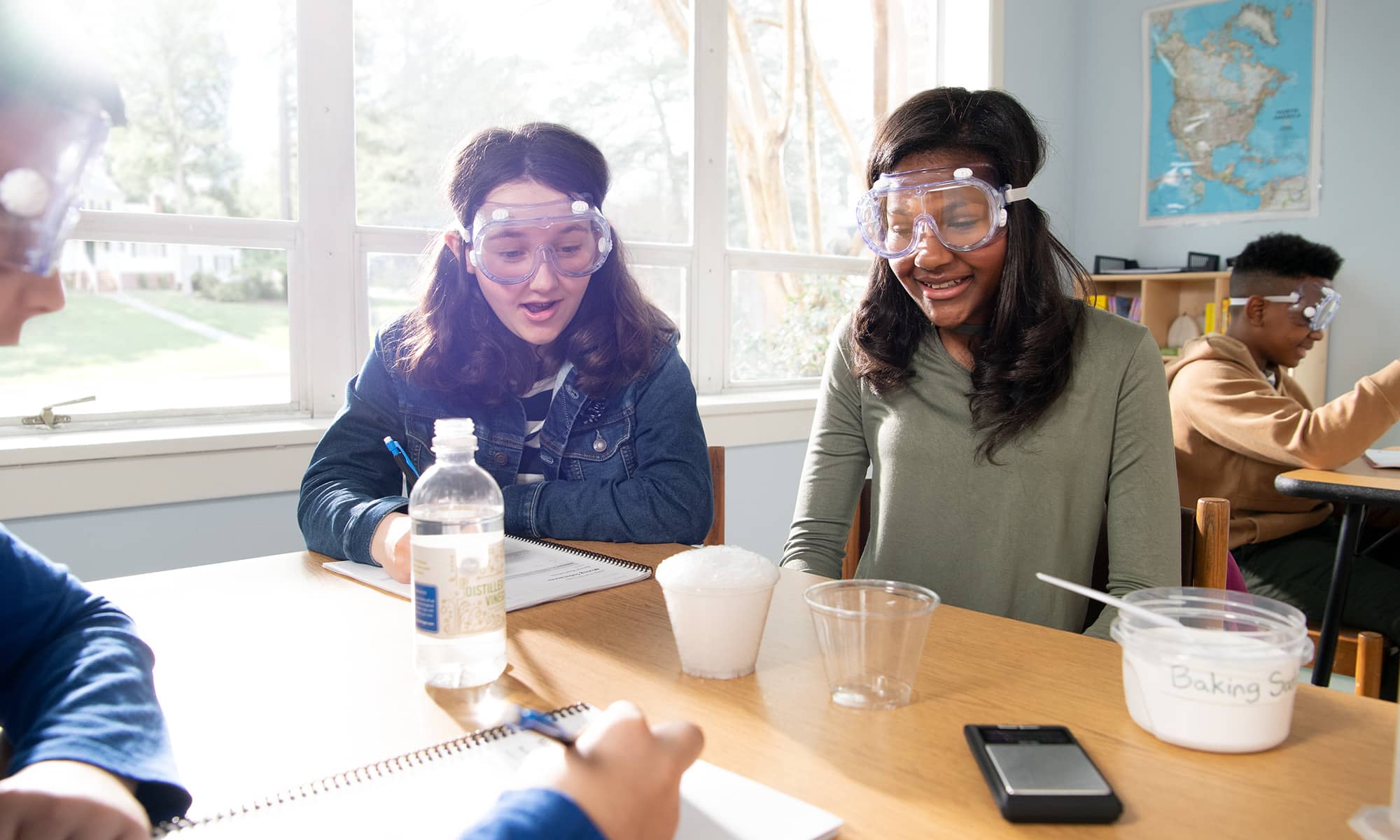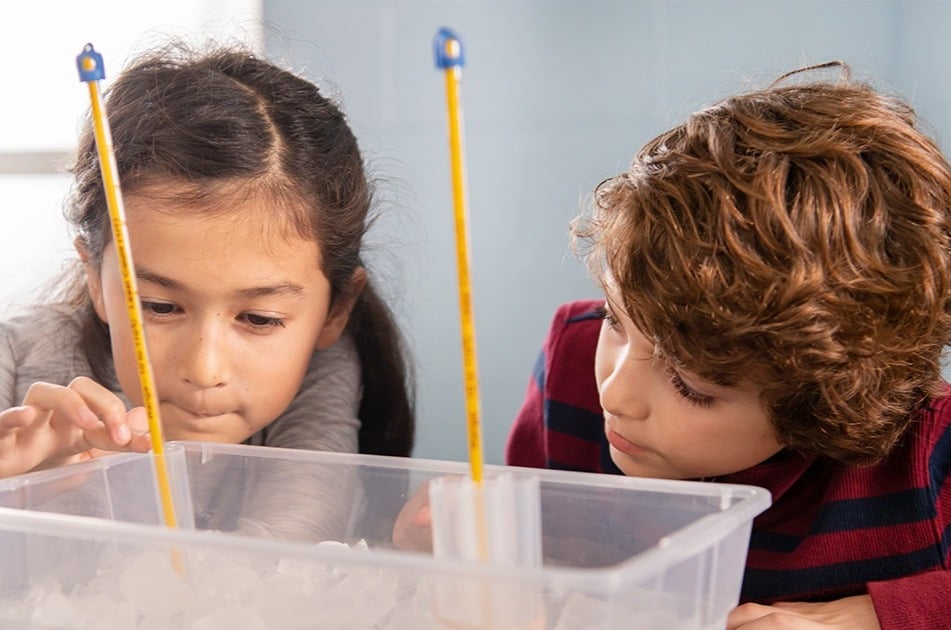Posted in: Aha! Blog > PhD Science > Assessments PhD Science Research Brief > The Importance Of High-Quality Science Curricula For Early Elementary Grades
How do You Foster Curiosity in Young Learners About the World Around Them?
Ask any student who is just starting school what they want to be when they grow up, and you’ll get a wide range of answers that almost always share a common theme: There’s no limit to what they can imagine becoming one day. They are full of curiosity and are hungry for opportunities to discover more about the world around them.
Unfortunately, in the earliest grades, that curiosity is rarely fostered through a coherent, high-quality science curriculum. Science instruction for young learners too often consists of disparate activities that don’t help students build lasting knowledge and can lead them to disengage from science.
We see the problem, and we’re tackling it head-on by providing PhD Science, our high-quality knowledge-building science curriculum, as an open educational resource for K–2 students. Access the free OER here.
What is the Current State of Elementary Science Instruction?
The research is clear: Too few students currently have access to a high-quality science curriculum, and too few teachers have the supports necessary to ensure that students are building science knowledge and understanding from their earliest school experiences.

(Note: Data are solely from elementary school teachers who indicated that they teach reading, mathematics, science, and social studies to one class of students. (Data source)
A new report from the National Academies of Sciences, Engineering, and Medicine (NASEM)(NASEM) highlights the current inequities in science instruction and reveals that far too few students have access to high-quality science instruction. The lack of high-quality instructional time for science is also made clear by data from Horizon Research, which shows that nationwide, elementary school students spend only 20 minutes a day on science instruction (Smith 2020, 53). The authors of the National Academies report worry that “less exposure to science in elementary school could be problematic for students who do not have access to science learning opportunities in their homes and communities. For these students, limiting early science learning opportunities in school may leave them unprepared for science courses in middle and high school” (NASEM 2021, 28).
Unfortunately, elementary school teachers often feel unprepared to teach science, and given the pressures on math and English language arts instruction, science instruction is too easily squeezed out of the instructional day. A national survey found that many elementary school teachers (69 percent) reported that they were not very well prepared to teach science. Many of these educators who report being unprepared to teach science also find themselves in the position of having to create their own instructional materials. A research report from RAND found that “teachers are more likely to rely on self-created and non-curriculum materials in science than in math or English language arts (ELA),” while also noting that teachers receive less feedback in science instruction as well (Doan and Lucero 2021, 3).
A national survey found that many elementary school teachers (69 percent) reported that they were not very well prepared to teach science. Many of these educators who report being unprepared to teach science also find themselves in the position of having to create their own instructional materials.
In another survey of teachers, RAND reported that 30 percent of elementary school teachers are creating their own science curriculum for students. When asked if they have enough classroom time to teach science, 52 percent of surveyed teachers strongly or somewhat disagreed (Doan et al. 2020, 4). Other studies found that teachers in Grades K–3 are teaching science “some weeks, but not every week” (Smith 2020, 43). Many educators do not get appropriate time or support to implement high-quality elementary science curriculum. It’s hardly surprising then that when science is taught, with disjunctive lessons on and an irregular schedule, students may walk away knowing a few random science facts, but they do not build true science knowledge.
Frequency with which Elementary School Teachers in Self-Contained Classrooms Taught Science

(Note: Data are solely from elementary school teachers who indicated that they teach reading, mathematics, science, and social studies to one class of students. (Data source)
Read more about the need for focused science instruction in elementary schools in the Science Should Not be an Elective white paper.
How Do You Give All Students and Educators Access to a High-Quality Science Curriculum in the Early Grades?
Scores reported by the National Assessment of Educational Progress (NAEP) show that students’ science knowledge has stagnated, and under current educational conditions, that trend is likely to continue.
To improve elementary science education, districts must make high-quality instructional materials for science widely available to all schools, educators, and students and help teachers work science lessons into their instructional day. PhD Science lessons are designed with the reality of time constraints in mind: 35 minutes long with a total of 110 lessons on average per grade level. The curriculum also provides pacing suggestions. Teachers who feel ill prepared to teach science can participate in professional learning programs and access Great Minds® educative resources, including built-in supports for teachers covering science content, pedagogy, and more.
To respond to the call for increased rigor and knowledge building in elementary school science, Great Minds released PhD Science for Levels K–2 as an open educational resource (OER). While many science OER materials are available, few are coherent and focused on helping students build conceptual understanding. Most, like their print counterparts, offer a mixed collection of discrete science facts and disconnected phenomena.
Access grade levels K–2 of the PhD Science® curriculum as an open educational resource (OER)
What are the consequences of not providing a coherent high-quality science curriculum in the early elementary grades? For one thing, students move on to upper grades without the foundational scientific knowledge and critical thinking skills they’ll need to succeed. Students don’t learn how to think analytically, solve problems, ask questions, and make observations. A Framework for K–12 Science Education is clear on this— starting in Kindergarten and continuing through Grade 12, students should be taught a coherent set of concepts that build in rigor and complexity. Nancy Hopkins-Evans, a member of the committee that wrote the National Academies’ report, outlined the dangers of neglecting science in elementary school in an interview with Education Week:
But without that foundational and fundamental education in science, it makes it very difficult ... for people to end up having STEM careers and for having a democracy that functions on being able to use evidence, to be able to use arguments, to be able to think critically and make decisions that are either related to science or science-based. (Sparks 2021)
PhD Science was developed from A Framework for K–12 Science Education and the Next Generation Science Standards. The curriculum aligns with the standards and intentionally meets the criteria for high-quality instructional materials that the Framework requires. Further, the writers of PhD Science strove to make science tangible for all learners, especially the youngest ones, by ensuring that the phenomenon-driven learning called for in the NGSS was realized through authentic phenomena in real-world contexts. were authentic and not manufactured. Authentic phenomena—ranging from birds building nests to the 1900 Galveston hurricane to life around a mangrove tree—in every module of every grade help students make sense of the real world. The curriculum module map shows the anchor phenomena that the modules use to engage students in the learning.
Instead of isolated lessons and science activities gathered from disparate sources, our K–2 PhD Science OER provides students a coherent, knowledge-building curriculum that enables them to make sense of what they are learning, apply those concepts to the real world, and satisfy their curiosity with a solid foundation of science knowledge.
How do You Provide Access Points for Every Child?
It is not enough, however, to provide a curriculum with rich content. The material also must be accessible to all learners. As discussed above, one access point for students is the authentic phenomenon in each module, which are also presented through multiple media, including videos, photographs, award-winning trade texts written by experienced children’s book writers, music, and even art. The anchor phenomena are carefully chosen to be not only knowledge-rich but culturally rich. The anchor phenomena are set in diverse communities and locations around the globe—from the cliff dwellings in Mesa Verde, Colorado, to the rice fields of Indonesia—and students reflect on the current and historical cultural implications of the science knowledge they build throughout the module. Modules often include rich stories that situate phenomena and the science ideas behind them in a cultural context and describe individual scientists’ multifaceted experiences and identities. These stories invite multiple points of connection with phenomena and scientists.
 Paul Klee, Fish Magic, 1925. Courtesy Philadelphia Museum of Art, The Louise and Walter Arensberg Collection, 1950-134-112
Paul Klee, Fish Magic, 1925. Courtesy Philadelphia Museum of Art, The Louise and Walter Arensberg Collection, 1950-134-112
One way PhD Science offers additional access points for students is by integrating works of art. Art and science both begin with wonder, and both invite students to observe, question, and make sense of the world around them. Each module integrates a purposefully selected art piece. Interaction with this art allows students to engage with a scientific phenomenon as it appears in an artistic representation, explore the art itself as a phenomenon, or apply their science knowledge in an unexpected context. These pieces, by artists from diverse backgrounds and cultures, invite students to connect various cultural experiences to science in new ways.
Rather than limiting students to a lab report or other traditional means of communicating what they have learned, the curriculum encourages students to use multiple modes of communication—written or spoken words, gestures, models, sketches, and more—and allows them to choose the one that works best for them. The many instructional routines built into the curriculum are designed to help students develop their own questions and learning and share what they know and wonder. Instructional routines provide students with a structured approach to thinking about a topic, question, or idea but also often get students moving and interacting with each other. The instructional routines suggested in the curriculum help students think about science in different ways to build content knowledge, deepen their understanding, and develop critical thinking skills. Instructional routines increase student engagement and provide ways for teachers to see and hear what students are thinking and learning.
|
Watch a brief snippet from our Ask Us Anything About PhD Science webinar to learn more about how the curriculum supports young learners with age-appropriate rigorous content. You can also access the full recording here. |
For students to fully be able to unlock their greatness, they need access to high-quality science curriculum. For too many students, meaningful science education starts too late, and most educational materials they get don’t spark curiosity or joy in learning. PhD Science was created to inspire students to wonder about the world and empower them to make sense of it. We know that to support students’ success in science in the upper grades, teachers need access to high-quality curriculum starting with the first day of Kindergarten and that rigorous material needs to be engaging and accessible. By providing PhD Scienceas an OER for grade levels K–2, we'll continue helping students build enduring science knowledge through primary school and ensure they are ready for secondary school science.
To further increase access to the curriculum, Great Minds is supporting the U.S. Department of Education’s #GoOpen initiative, which assists states and districts in the transition to the use of openly licensed educational resources to transform teaching and learning. PhD ScienceLevels K–2 OER is currently featured on the national #GoOpenNetwork, #GoOpenConnecticut, #GoOpenMichigan, and #GoOpenVirginia, and plans are underway to support additional states in this transition. By offering the curriculum as an OER through #GoOpen, we support the network’s goals of increasing equity and access by making sure that a limited budget doesn’t hinder a district’s access to high-quality science content. Access the OER materials on the Great Minds website here, and learn more about the #GoOpen initiative on its website.
Doan, Sy, David Grant, Daniella Henry, Julia H. Kaufman, Rebecca Ann Lawrence, Andrea Prado Tuma, Claude Messan Setodji, Laura Stelitano, Ashley Woo, and Christopher J. Young. 2020. American Instructional Resources Surveys: 2020 Technical Documentation and Survey Results. Santa Monica, CA: RAND Corporation, 2020. https://www.rand.org/pubs/research_reports/RRA134-4.html.
Doan, Sy and Al Lucero. 2021. Changing the Subject: K–12 Teachers’ Use of and Access to Science-Specific Instructional Materials, Feedback, and Professional Learning. Santa Monica, CA: RAND Corporation. https://www.rand.org/pubs/research_reports/RRA134-7.html.
National Academies of Sciences, Engineering, and Medicine (NASEM). 2021. Call to Action for Science Education: Building Opportunity for the Future. Washington, DC: The National Academies Press. https://doi.org/10.17226/26152.
National Research Council (NRC). 2012. A Framework for K–12 Science Education: Practices, Crosscutting Concepts, and Core Ideas. Committee on a Conceptual Framework for New K–12 Science Education Standards. Board on Science Education, Division of Behavioral and Social Sciences and Education. Washington, DC: The National Academies Press. https://www.nap.edu/read/13165/chapter/1#iv.
Smith, P. Sean. 2020. 2018 NSSME+: Trends in U.S. Science Education From 2012 to 2018. National Survey of Science and Mathematics Education. http://horizon-research.com/NSSME/wp-content/uploads/2020/04/Science-Trend-Report.pdf.
Sparks, Sarah. 2021. “Make Science Education Better, More Equitable, Says National Panel,” Education Week, July 13, 2021. https://www.edweek.org/teaching-learning/make-science-education-better-more-equitable-says-national-panel/2021/07#:~:text=“But%20without%20that%20foundational%20and,that%20are%20either%20related%20to.
Download the Article as a Free PDF

Jenny Taylor
Jenny has over a decade of experience in education policy and research. She has worked with states and districts on the development and implementation of college and career readiness policies, especially around the implementation of rigorous standards and high-quality instructional materials. She has extensive knowledge about K–12 standards, graduation requirements, assessments, and accountability systems nationwide. Additionally, she has conducted research for school districts to address pressing needs in those districts. Jenny received her B.A. in English and education from Bucknell University and her M.Ed. in education policy from the University of Pennsylvania Graduate School of Education.
Topics: Assessments PhD Science Research Brief








